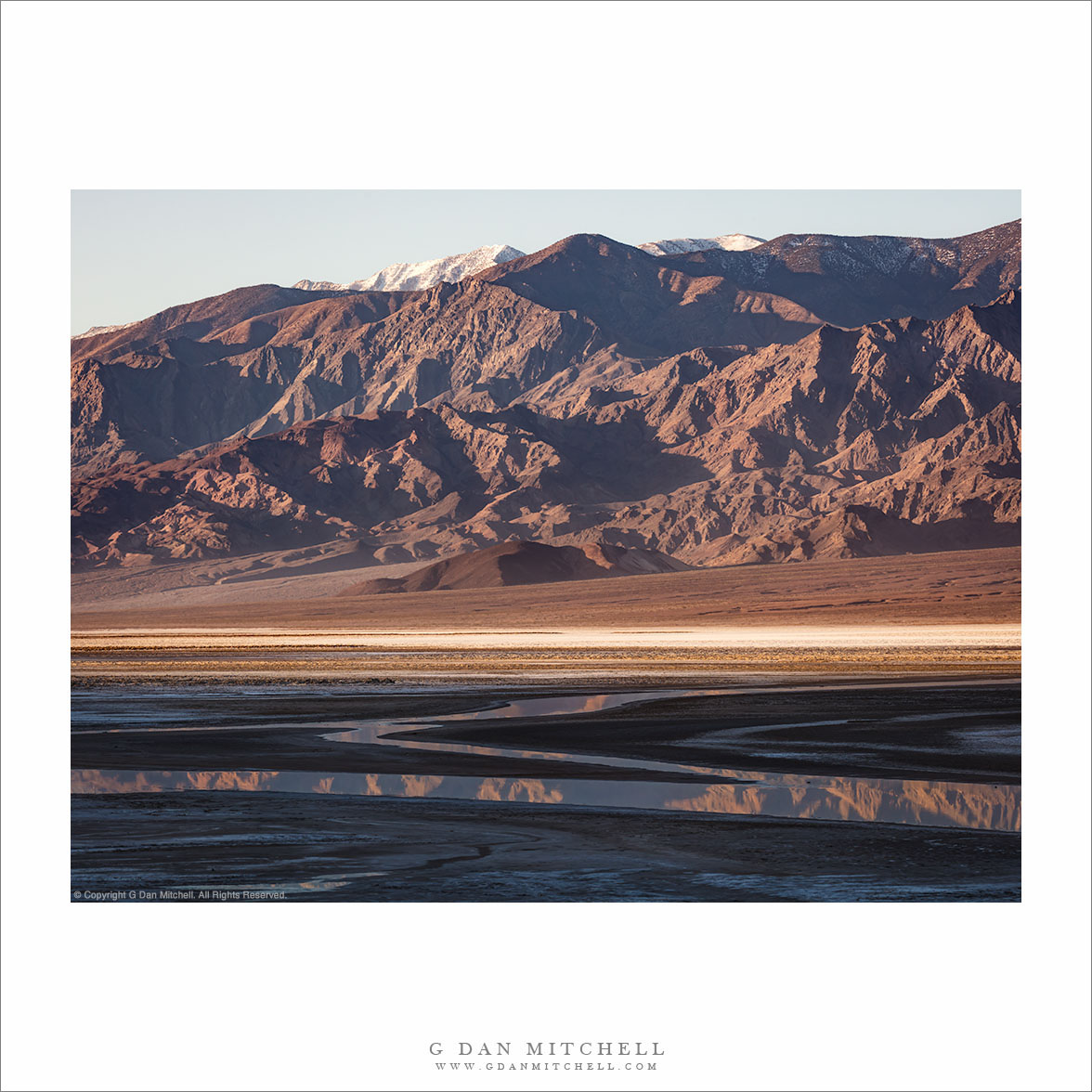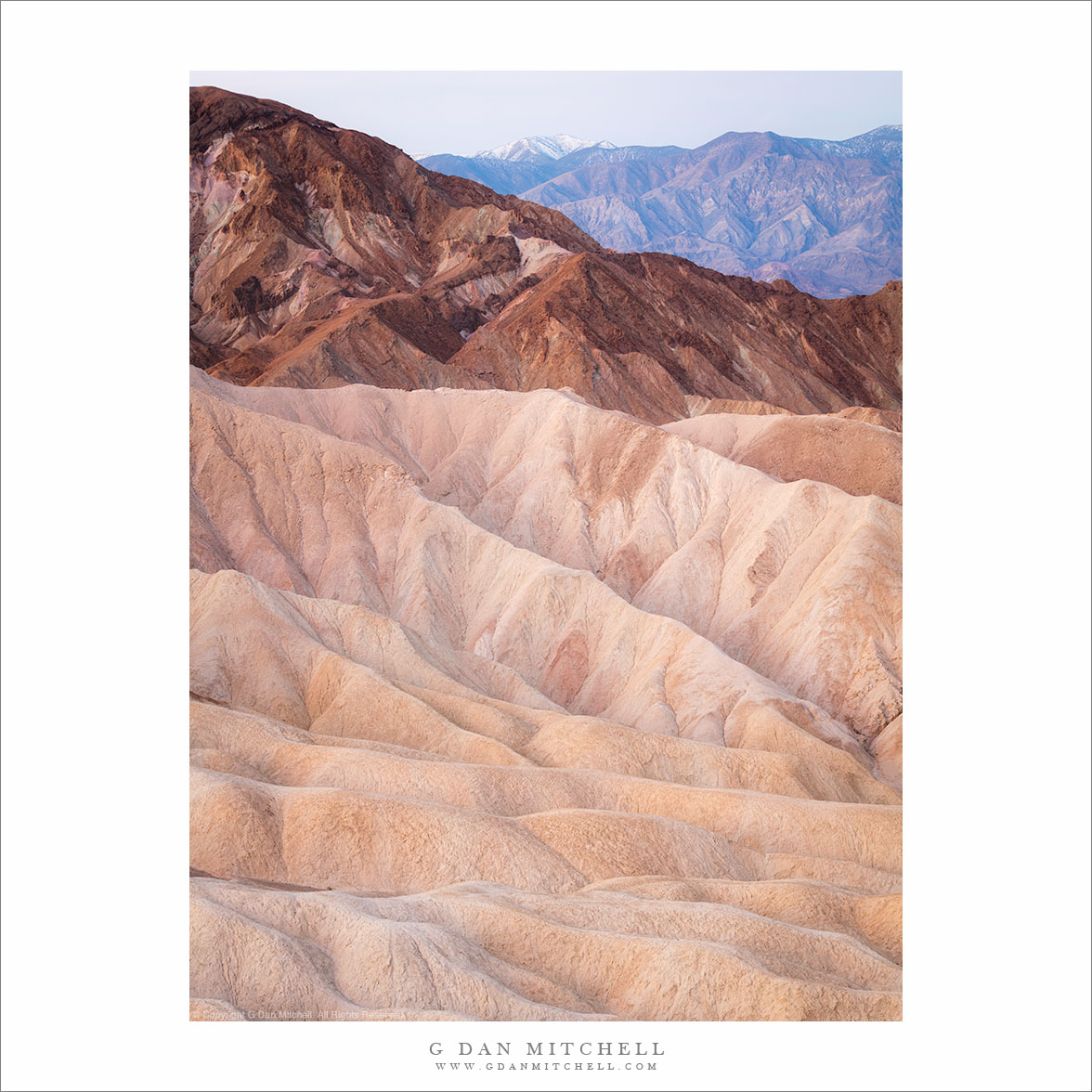
How many times have I watched for this first light as it touches the peaks and ridges of the Panamint Mountains before working its way down to the floor of Death Valley? I have no idea, but I’ve been going there for something like 25 years now, so it must be quite a few times! It never gets old.
The highest point in this photograph is snow-capped Rogers Peak. The highest summit in the park, Telescope Peak, is just out of sight to the left. Surprisingly, there are communications facilities on top of Rogers Peak, and in a higher resolution version of this photograph you can see the towers on the very summit.
G Dan Mitchell is a California photographer and visual opportunist. His book, “California’s Fall Color: A Photographer’s Guide to Autumn in the Sierra” (Heyday Books) is available directly from him.
G Dan Mitchell: Blog | Bluesky | Mastodon | Substack Notes | Flickr | Email
All media © Copyright G Dan Mitchell and others as indicated. Any use requires advance permission from G Dan Mitchell.



